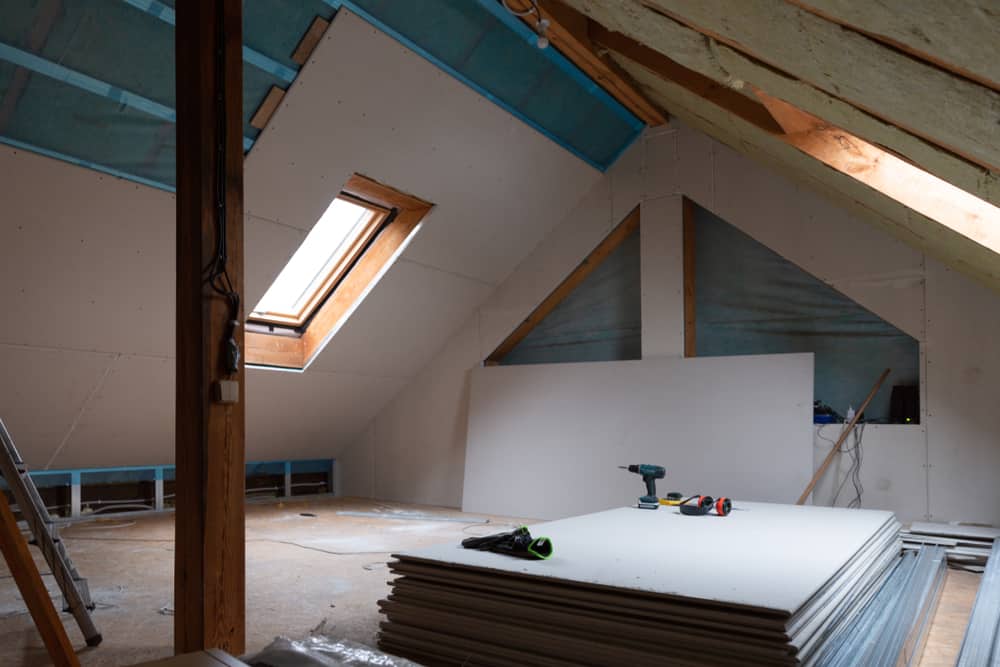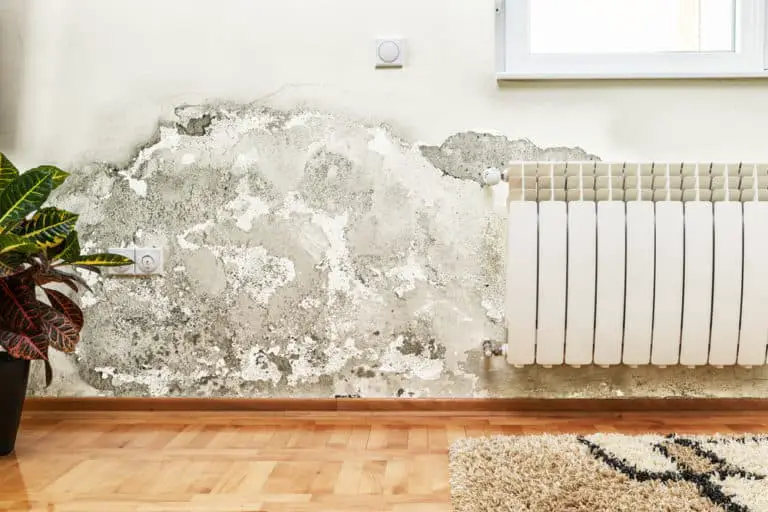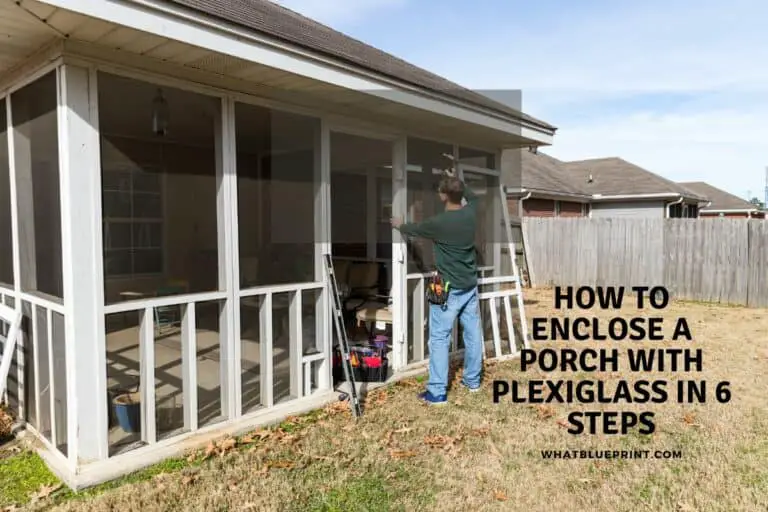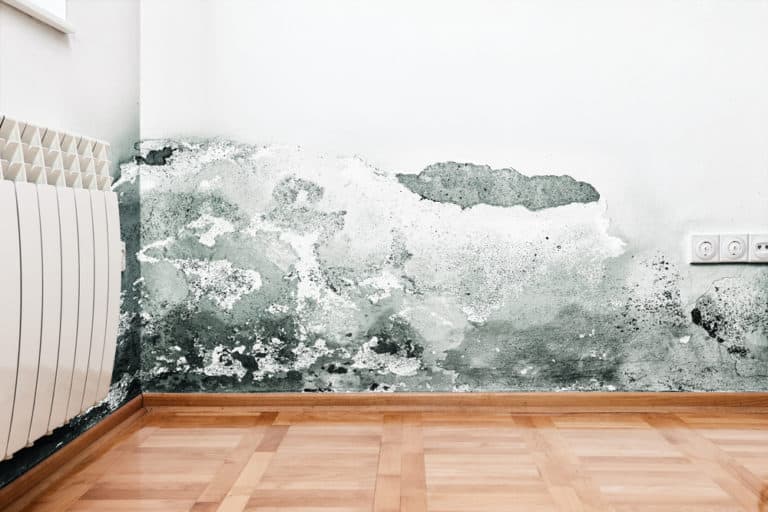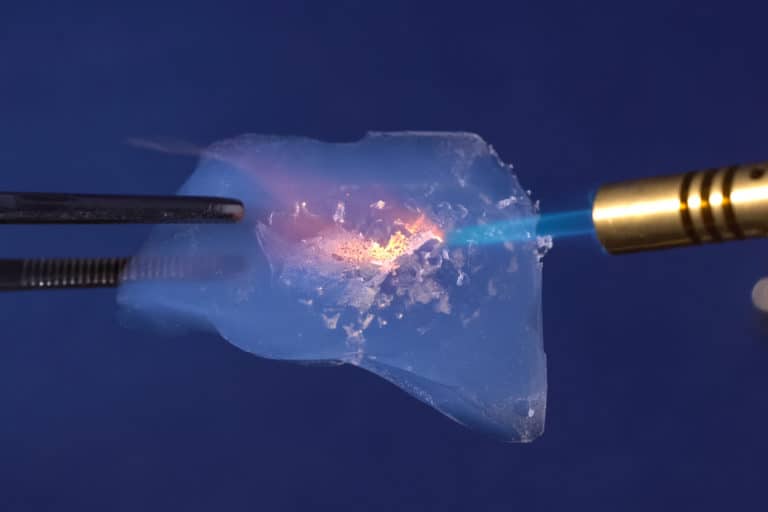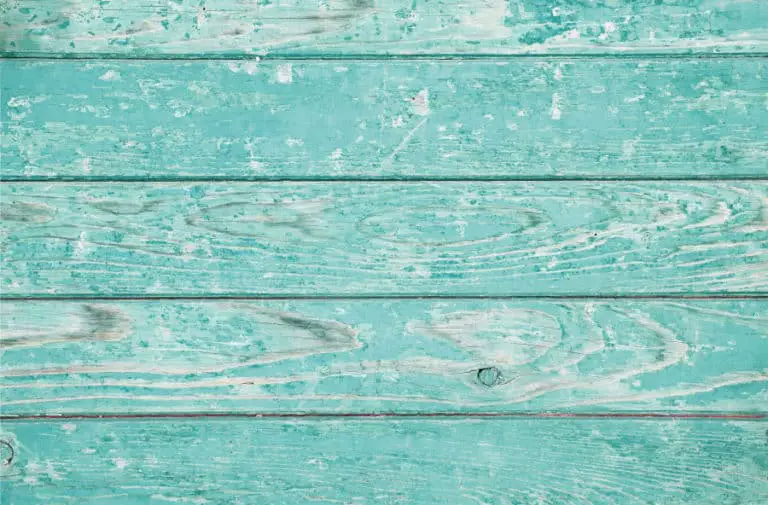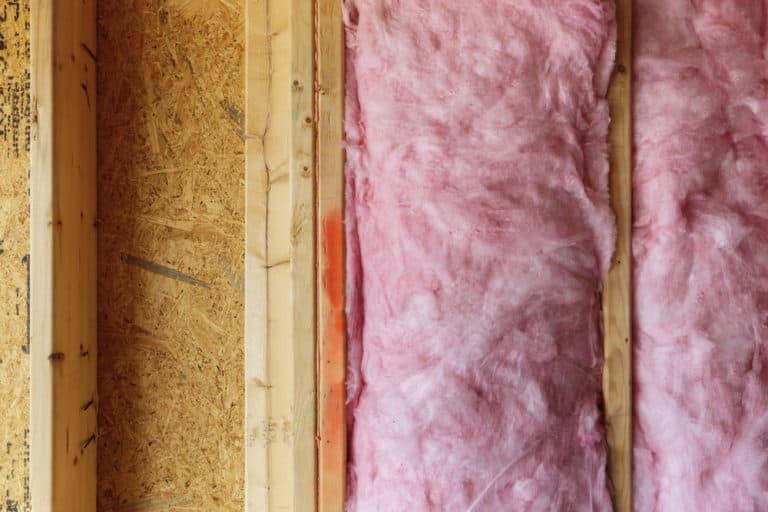Drywall Alternatives For Attics
For many years, drywall has been the go-to option for interior walls, especially in attic spaces. Installing drywall is somewhat laborious, involving taping, sanding, mudding, and a significant amount of mess when finishing off the process. Drywall requires a considerable amount of maintenance and does not last particularly long.
There are several alternatives to drywall currently available on the market. Some options include wooden planks, veneer plaster, plastic panels, plywood, cement board, corkboard, reinforced fiberglass & gypsum board, 3D panels, and corrugated metal.
There are many aspects to drywall that make it an undesirable walling option. Drywall is easily damaged, requires regular maintenance to look respectable, does not last indefinitely, and damage is easily visible. Drywall also bloats from exposure to moisture and can potentially look cheap if not installed correctly.
Drywall Alternatives For Attic
While drywall tends to be the go-to option for interior walling projects, especially in attics, there are numerous options available that make it far easier to find a better interior walling alternative that will better suit your desired aesthetic and your budget and interior wall requirements.
The installation of drywall is a labor-intensive one. It is also messy, and the end result often leaves much to be desired. Improperly installed drywall can look cheap and unappealing. To maintain a clean and neat aesthetic, drywall must be maintained regularly.
The need for constant maintenance is directly linked to how drywall is prone to damage, and the damage is easily noticeable. Moisture is a significant problem for drywall. Exposure to moisture will cause the drywall to bloat, and it will also cause the growth and formation of mold and mildew.
There are numerous alternatives to drywall that will be better from an aesthetic point of view and require less maintenance in the long term. Many alternative drywall options are also less susceptible to mold and mildew and can perform better under moist conditions.
Some of the drywall alternatives to be discussed include:
- Wooden planks
- Veneer plaster
- Lath and plaster
- Lath and wood chip clay
- Plywood
- Textured panels
- Brick or stone
- Concrete blocks
- Cement board
- Pegboard
- Plastic paneling
- Corkboard
- Wahoo walls
- Reinforced fiberglass and gypsum
- Corrugated metal
- Stone veneer
- Faux brick
- Shiplap
- Acoustic panels
- Exterior siding
Wood Planks
Wooden planks have been used as a material for interior walls for several years. In fact, walls built with wooden planks have been around far longer than drywall. As a solid material, wooden plank walling requires less maintenance than drywall.
All you need to do is ensure that the timber remains dry. Treated timber is an option, and you will be better off sealing the wood using any type of sealant to ensure its longevity. There are countless finishes available for wooden planks to ensure you can match your intended aesthetic.
Barnwood is frequently used as an interior walling material. This material is visually appealing and structurally strong. However, it can be expensive to obtain and install. There is also a manufactured version of Barnwood that has the same aesthetic appeal without the maintenance or the hefty price tag.
Bear in mind that any engineered timbers do not do well if exposed to moisture.
Shiplap is often used as an interior wall, and it bears many similarities to traditional solid wood. Shiplap is easy to install, and it can keep any room dry and warm despite the external weather conditions. One of the disadvantages of shiplap walling is that it can collect dust in the gaps between the planks.
Veneer Plaster
Veneer plaster is a popular alternative to traditional drywall. The process for veneer plaster is somewhat labor-intensive. It will require a professional to achieve the desired finish and aesthetic. Veneer plaster is a time-consuming type of wall to create, but the result is well worth the effort.
Veneer plaster walls consist of gypsum board plastered over to create a smooth, paintable surface that is extremely hardy and versatile. Veneer plaster walls are highly resistant to mold and are naturally more complex than drywall.
This makes this type of wall more resilient than drywall, making it less susceptible to damage. As a result, veneer plaster walls require far less maintenance than drywalling.
Lath & Plaster
Lath and plaster walls have been around for an exceptionally long time. This method of creating a wall is incredibly time-consuming, but the result can be pleasant and resilient. Laths are traditionally narrow strips of timber attached between the studs and joists of the wall structure.
Once the laths are in place, they are then coated in plaster. Gaps are filled in until a smooth surface is created. This method of creating a wall is similar in nature to a traditional wattle and daub wall.
This type of wall is an excellent option for creating curved surfaces that would otherwise be difficult with traditional drywall.
The wood that is used is usually hand-split strips of timber. Alternative contemporary options include rock lath or metal lath. Plaster with horsehair is a brilliant addition to ensure a more robust finish.
Like traditional lath and plaster walling, lath and woodchip clay can also be used similarly.
Plywood
Plywood is one of the cheapest options when compared to drywall. It is an exceptionally straightforward method of constructing an interior wall. It is gaining popularity amongst designers as an interior wall finish.
Plywood can be painted in any color or finish as desired. It is also fire resistant, making it an excellent choice for walling in an attic. The approach to performing tasks such as hanging pictures is somewhat different with plywood than with drywall, so this must be kept in mind.
Textured Panels
Textured panels were previously used in hotel lobbies and upmarket bars and restaurants. Interior design trends have seen an increased use of these panels in homes. These panels often have three-dimensional patterns that create a reasonable degree of visual interest.
These panels can also be placed on existing walls to hide unattractive or damaged walling. Three-dimensional wall panels are paintable and available in many different designs that make them an extremely attractive option for your home.
Textured panels are highly durable, lightweight, affordable, and water-resistant. One important consideration is the fact that the panels are generally not heat resistant, so they will not do well located near any heat sources.
Brick Or Stone
Suppose the structure of your home can support it. In that case, a traditional brick or stone wall is always a good option that will look attractive while providing the necessary thermal properties and acoustic benefits.
Suppose it is not structurally viable to build a brick or stone wall in your attic. In that case, there are many faux brick or stone options available. This can be in the form of a stick-on veneer that will be stuck onto a plywood substructure.
Faux brick is a lightweight material that is easy to install. It is a great way to create the visual interest associated with brick without the need to build using real bricks. Faux brick is also water-resistant, and some of the products on the market have some degree of fire resistance.
Stone veneer is a cost-effective way to achieve the visual appeal of stone without the associated expense and substantial structural weight. Stone veneer is usually made of foam, meaning it is exceptionally lightweight and easy to handle.
Alternatively, you can install brick or stone cladding over the substructure for a more authentic look.
Raw Concrete Blocks
Concrete blocks are another type of material that will require sufficient structure to support the weight of the wall. While the aesthetic can potentially come across as harsh and brutalist in some settings, it can work exceptionally well under the right circumstances. Minimalist, industrial-style interiors can benefit significantly from this type of wall.
Cement Board
While potentially harsh and cold-looking, Cement boards can make an excellent interior wall finish, especially in an attic space. This type of walling is advantageous in moist areas that tend to be prone to mold.
These boards are usually made up of cement and fiber-containing cellulose. Due to their weight, two people are generally required to lift the panels to work with them.
Cement boards are expensive, making this one of the more expensive walling options. The weight of the panels is substantial, making it challenging to work with them. This is especially true if it is only one person working on the walls at a time.
Again, the brutal aesthetic of cement boards may not appeal to everybody and may not work in every setting. Still, it can work exceptionally well under certain circumstances.
Pegboard
A pegboard wall is an option you may not have thought of for your attic. This can, however, be an excellent option depending on the use of your attic space. Pegboard is a solid material installed directly onto the studs of the attic structure.
Simplicity of installation, extreme strength, and endless versatility are some characteristics that make pegboard an appealing interior wall for your attic. This type of walling opens up the opportunity to create infinite possibilities for organizing your space and creating any possible configuration of storage options and shelving that you may desire.
Cork Board
Corkboard is an aesthetically pleasing walling option that presents many opportunities for creating an attractive interior wall. However, its weight-bearing capabilities are minimal, so you must bear this in mind. Depending on your needs regarding what needs to be mounted on the walls, cork board may or may not work for you.
There are various colors, thicknesses, and cork chip sizes available. This will ensure that you find a corkboard that will function optimally for your needs.
Wahoo Walls
Wahoo Walls are generally used in basements but can also be implemented in attics with success. Wahoo Walls are highly moisture-resistant and easy to install. The system consists simply of panels that click together. This makes wahoo walls an easy and durable walling alternative.
Wahoo walls consist of an expanded polystyrene core. The panels are waterproof and can simultaneously resist the growth of mold and mildew.
Reinforced Fiberglass & Gypsum
Reinforced fiberglass and gypsum walling is somewhat similar to traditional drywall. However, this type of walling is exceptionally durable and resistant to scratching. Reinforced fiberglass and gypsum walling possess excellent strength and are installed directly against the studs without plywood backing.
This walling is also highly resistant to mold, making it ideal in moist environments.
Corrugated Metal
Corrugated metal can be used as an internal wall. Still, it is not recommended that it be used on more than one wall as it has a tendency to overwhelm the space quite easily. Corrugated metal can be difficult to cut to the correct size. It will require metal shears, a table saw, or a circular saw.
Vinyl Siding
Vinyl siding is extremely easy to install, making it an attractive interior walling option. Usually manufactured with tongue and groove panels, vinyl siding is easy to install. It will require no extra work other than a few screws to hold everything in place.
Vinyl siding can be placed over plywood, and it is extremely easy to clean.
Plastic Panels
Plastic panels such as those manufactured by Everlast are another excellent interior walling option. They are incredibly resistant to scratching as well as water and moisture. Plastic paneling is also highly stain-resistant and easy to clean.
Acoustic Panels
Acoustic panels can make an exciting interior wall in an attic. They can help turn your attic into an ideal space for activities that produce a great deal of noise, such as movie-watching, music-making, or game-playing.
Acoustic panels usually consist of a foam or wool interior with a timber frame. Each panel is individually wrapped in canvas or fabric, making for an attractive walling option that serves a functional purpose.
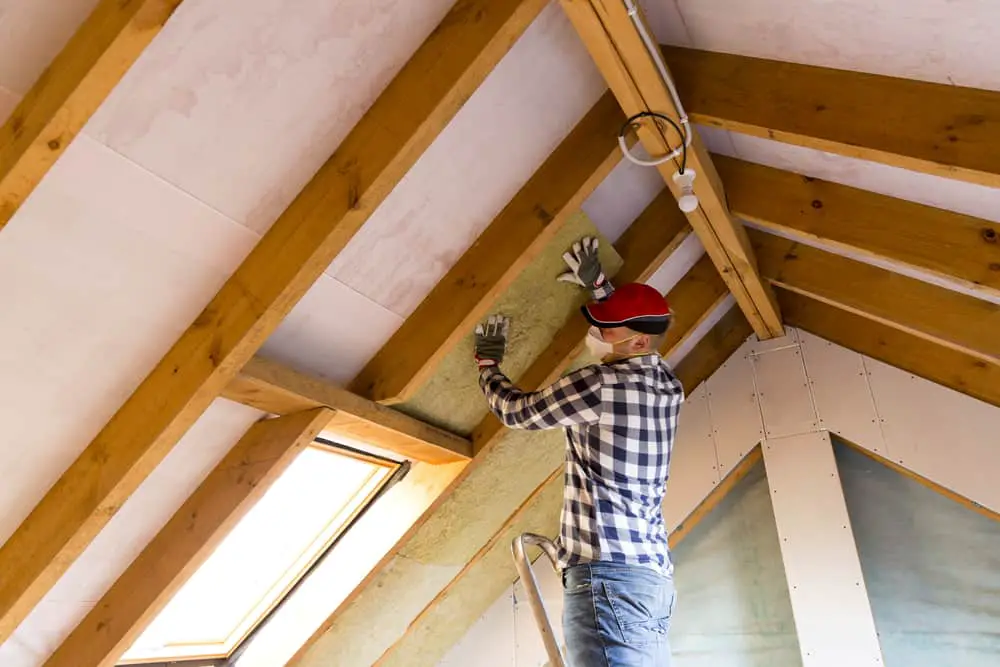
Conclusion
Many homeowners opt for drywall for their interior walls, whether renovating an existing home or embarking on a new project. However, drywall is not ideal for all applications for several reasons. Thankfully, numerous options are available on the market that make excellent alternative internal walls.

